Guest Post by Janie from Succulent Alley
Not everyone who loves plants automatically has a green thumb. Luckily, the “Urban Jungle” is also available in the easy-care version. Cacti and other succulents, for example, are already satisfied with minimal care. The main thing is sunny, warm and dry.
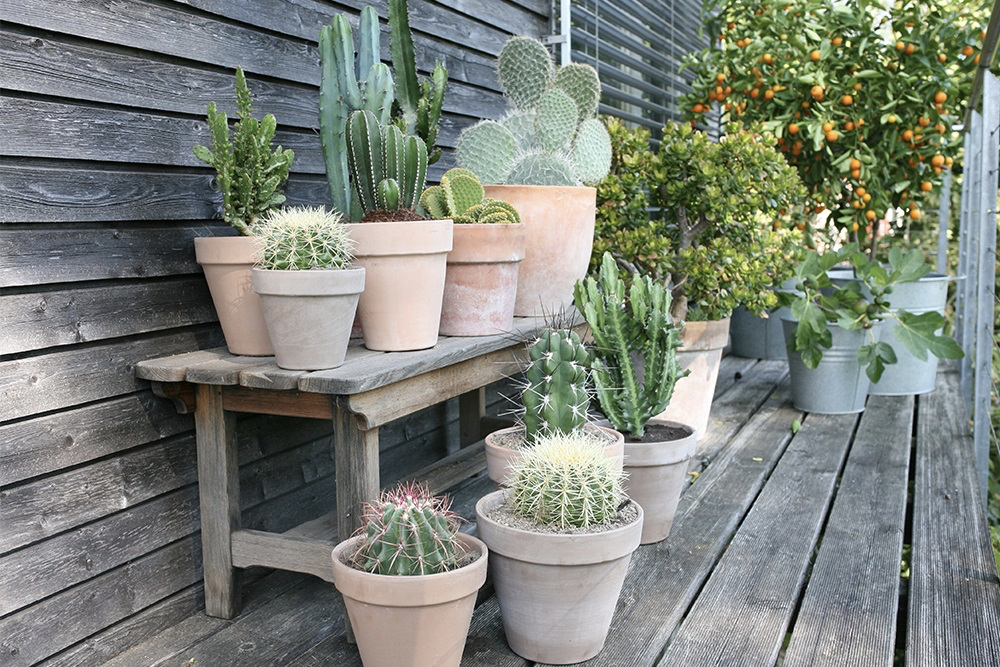
Drought-Resistant All-Rounders
The succulents, which include cacti, have adapted particularly well to barren climatic and soil conditions and are able to store large amounts of water in their cells. The Latin name is “sucus”, which translates as “juice” or “juicy”. While cacti are mainly specialized in desert sites, the succulent, i.e. juicy, species also include numerous leaf, stem and root succulents that form succulent and fleshy water storage tissue. All species have one thing in common: they are ideal plants for all people who occasionally forget to water.
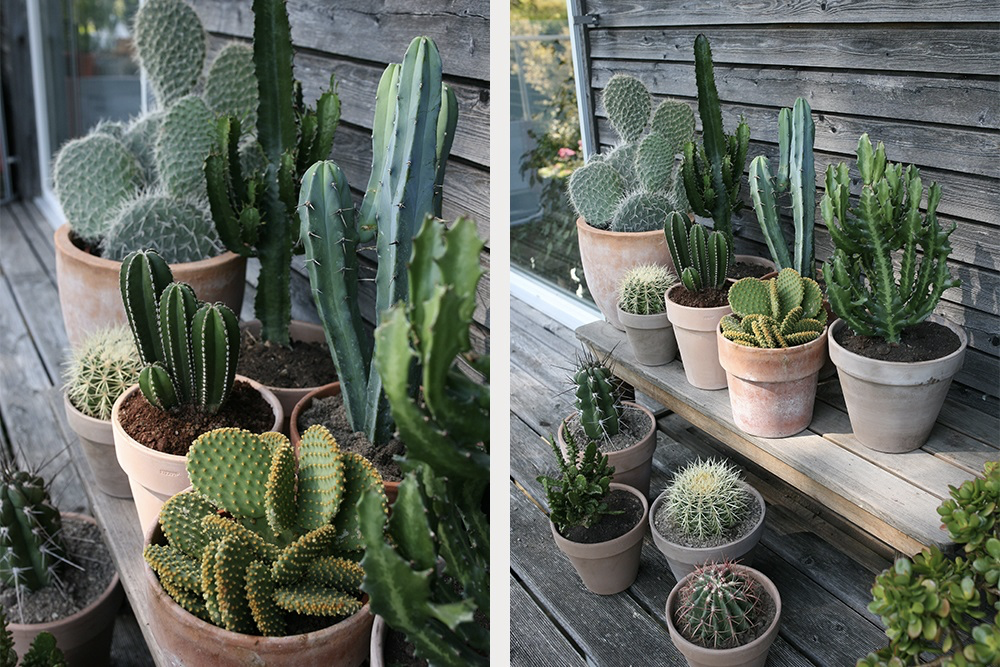
The Agony of Choice
Plants on patios and balconies are often exposed to the blazing heat all day. While conventional balcony plants suffer in the summer heat and need to be watered up to twice a day, cacti and other succulents thrive under these conditions. With so many succulent plants to choose from, it’s difficult to choose one. You don’t have to, because they look most beautifully arranged in groups, where the dry artists inspire with different shapes, structures and heights.
That’s why my succulent paradise consists of a veritable cactus mix of Echinocactus, Stetsonia, Melocaktus, Opuntia, Pilocereus and even more varieties.
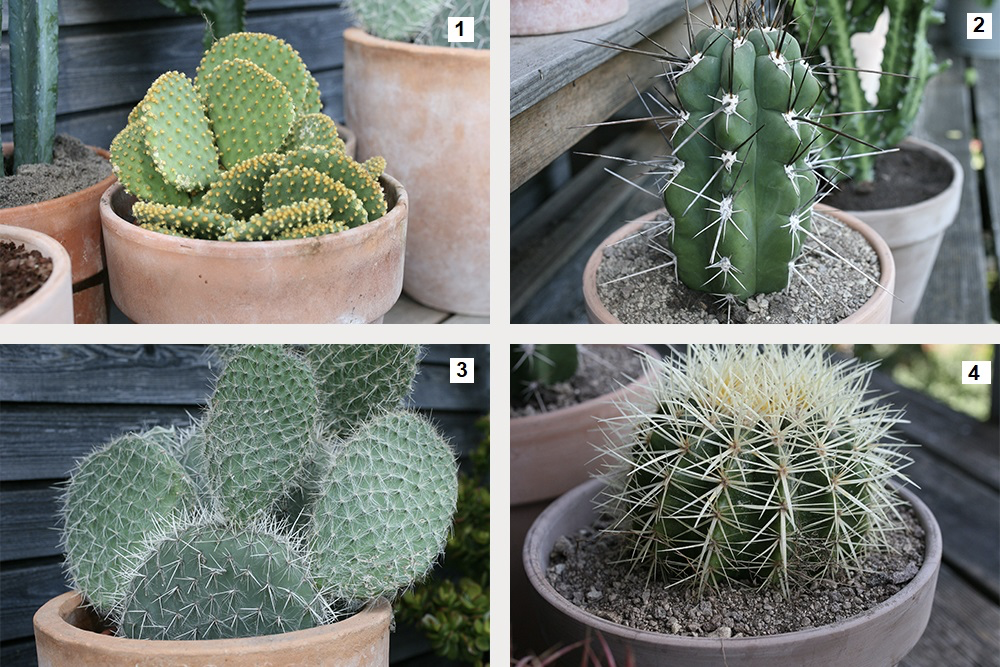
1. Opuntia rufida, 2. Stetsonia coryne, 3. Opuntia microdasys & 4. Echinocactus grusonii
The Right Substrate
Waterlogging causes the delicate plant tissue to rot quickly and is usually fatal to the plant. That is why cacti and other succulents need special cactus soil. This consists of a water-permeable, nutrient-poor substrate. Unglazed clay pots with drainage holes optimally balance the water balance.
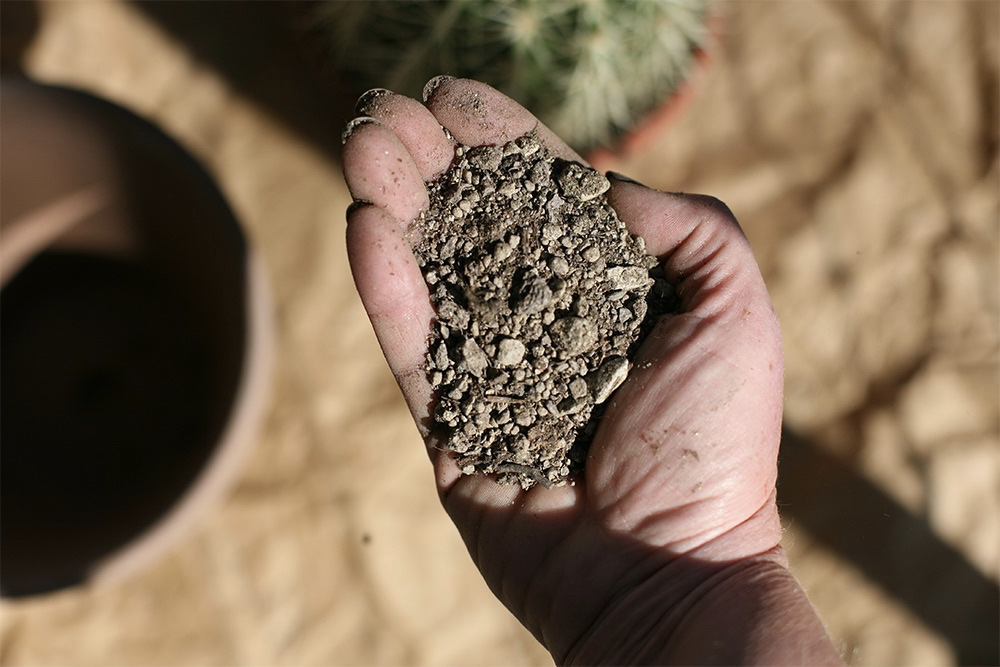
Be Careful When Repotting!
There are a number of things to consider when repotting cacti! This is because the spines prick quite neatly and often leave inflamed punctures on the skin. Not only do the large, clearly visible spines hurt, far worse are the small, almost invisible spines, which break off when they come into contact with the skin, remain in the skin and are extremely uncomfortable for many days with each touch. So be careful when repotting and thick gloves are mandatory.
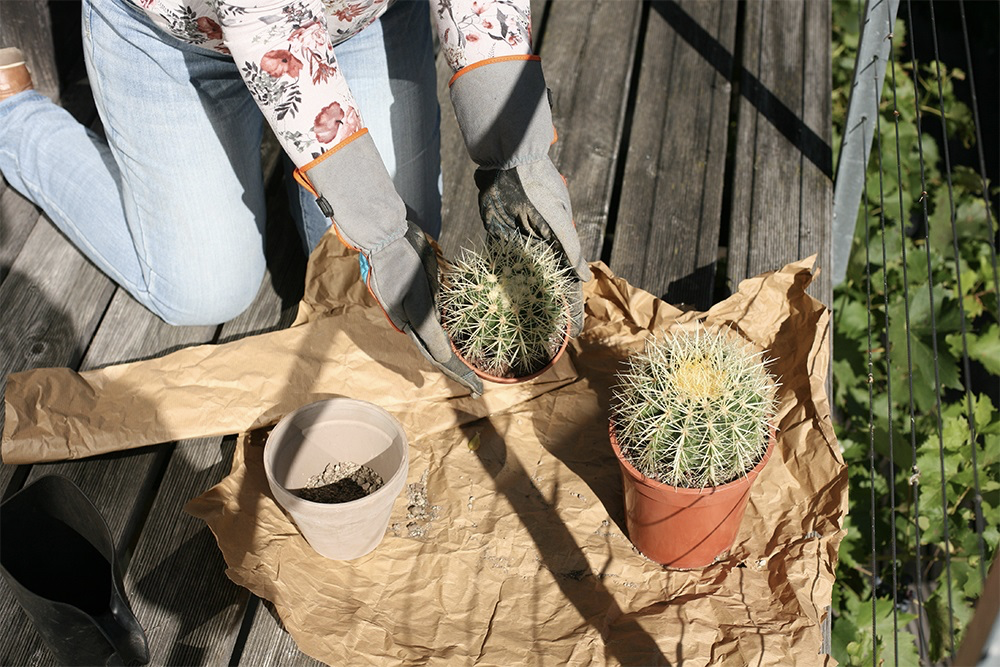
Repotting takes place every two to three years, preferably in spring. The new pot should only be one to two centimeters larger than the old one. To avoid injuring yourself or the cactus, fold newspaper or wrapping paper into a wide band. With this, tightly enclose the cactus head and carefully lift it out of its old pot. Then carefully remove the roots from the old soil by hand.
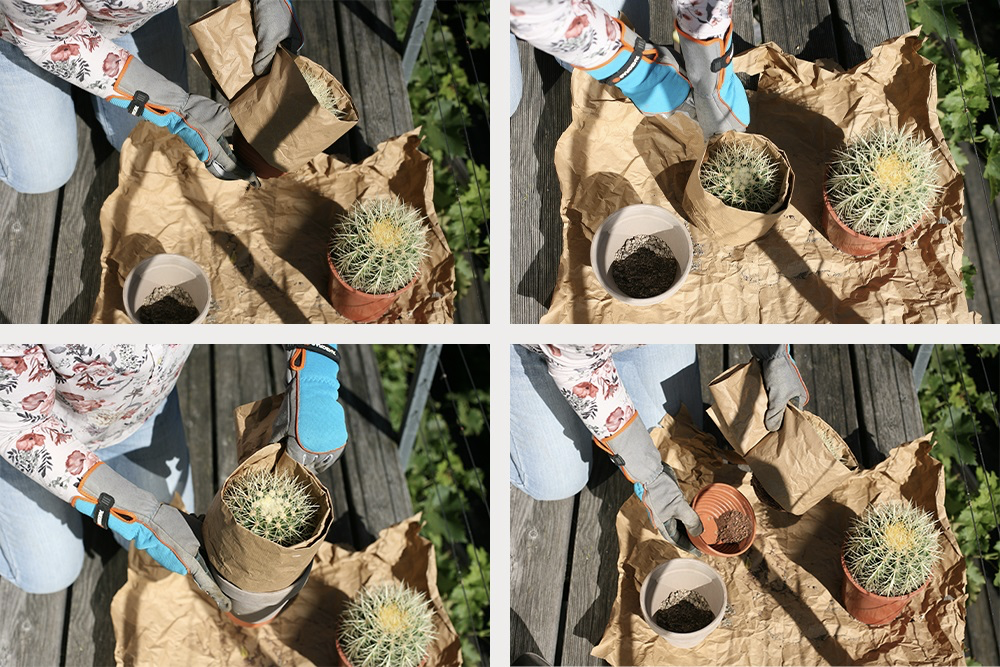
The new pot should already be prepared and filled with fresh cactus soil to the correct planting height. The cactus is placed in the new pot, straightened and the side edges filled with fresh cactus soil. In the first two to three weeks after repotting, the cactus must not be placed in the blazing sun. Watering can be reduced to a minimum, because repotting can damage the roots – and injured roots rot quickly! Incidentally, new plants do not have to be repotted after purchase, because there are still enough nutrients in the soil for the first year.
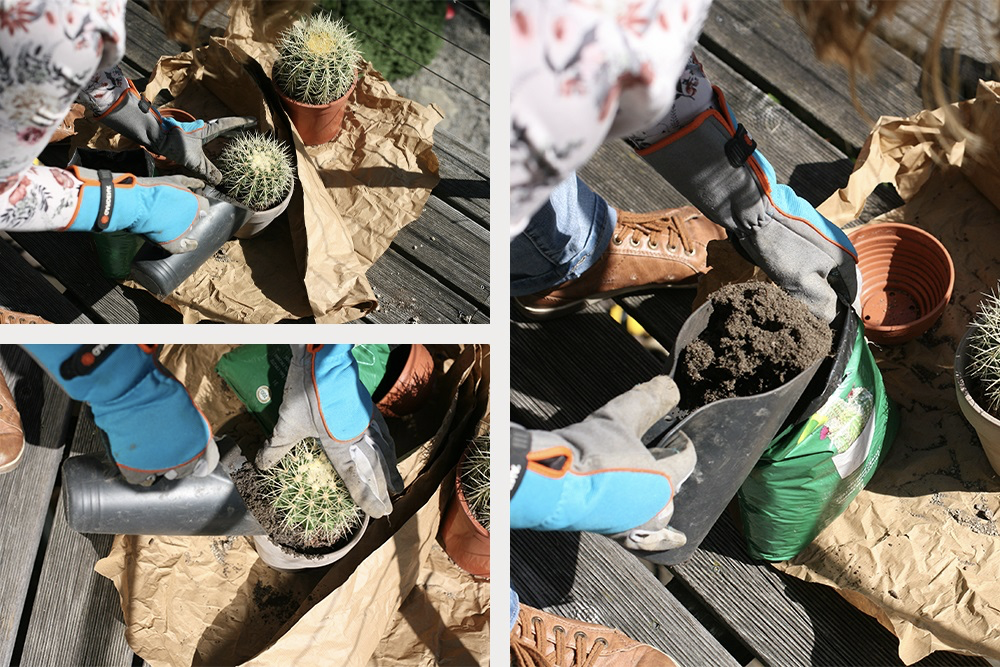
The Irrigation
Occasionally forgetting a watering process cannot harm succulents. Too much wetness, on the other hand, damages them and causes the sensitive tissue to rot quickly. Even if the dry artists store a lot of water, they need regular watering during the growing season and significantly more than in the winter dormancy. The dryness of the soil can be easily determined using a finger test. Depending on the location and type, the watering processes can be very different in the summer period. The basic principle is: it is better to water twice too little than once too much!
Cacti and Succulent Fertilizers
Succulents do not necessarily need fertilizer. However, nutrient deficiency significantly reduces healthy growth and flowering capacity. Cacti fertilizers are adapted to the special needs of desert inhabitants. During the main growing season from May to August, cactus fertilizer can be added to the irrigation water every three to six weeks. The nutrients are absorbed quickly, resulting in healthy growth, firm tissue and increased flowering.
The Ideal Location
In the spring, cacti and other succulents are allowed to take in the sun after the ice melts. In order to avoid irreparable burns due to strong sunlight, they have to get used to the sun slowly during the first days in a shady location. During the summer, on the other hand, they need a warm and sheltered place with lots of direct sun.
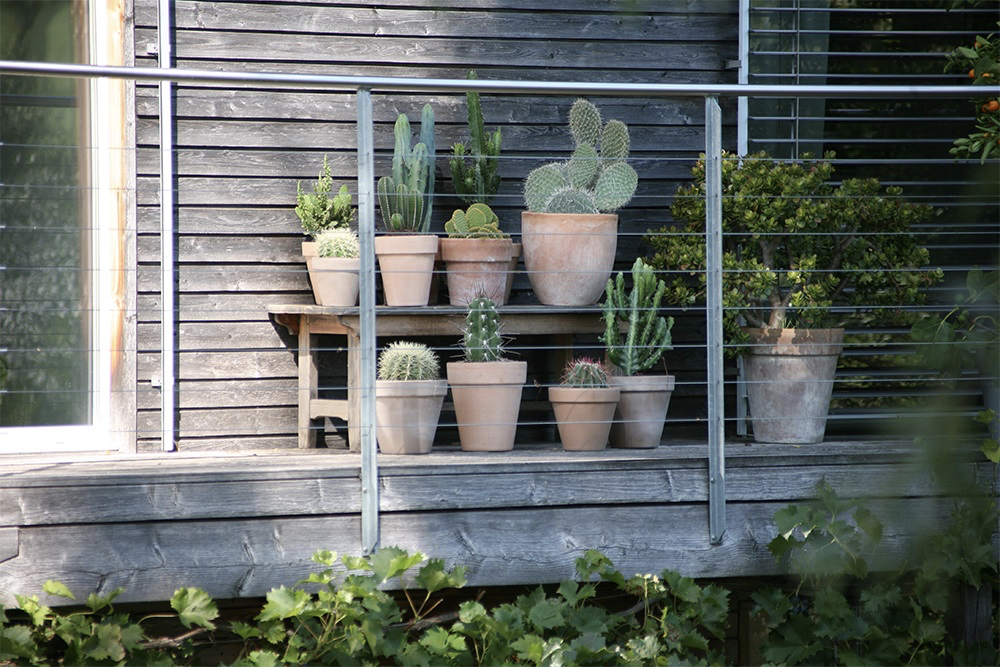
From the end of August, the irrigation is slowly reduced and almost completely stopped in mid-October. Succulents that hibernate in cool places are moved close to the wall of the house and can remain outside for a while before they are brought to their winter home. Afterwards, ideal wintering conditions are provided by an 8 – 12 degree warm, bright room directly at the window. The substrate is kept very dry from October to February
However, many species can hibernate even at normal room temperatures. Succulents that overwinter in warm locations should be brought to their winter quarters earlier. In this way, a harmful temperature shock can be avoided. A very bright location and regular checks for pests are extremely important. Mealybugs in particular like to nest in a warm neighborhood. In the heated living room, the succulents regularly need water even in winter – albeit significantly less than in summer!
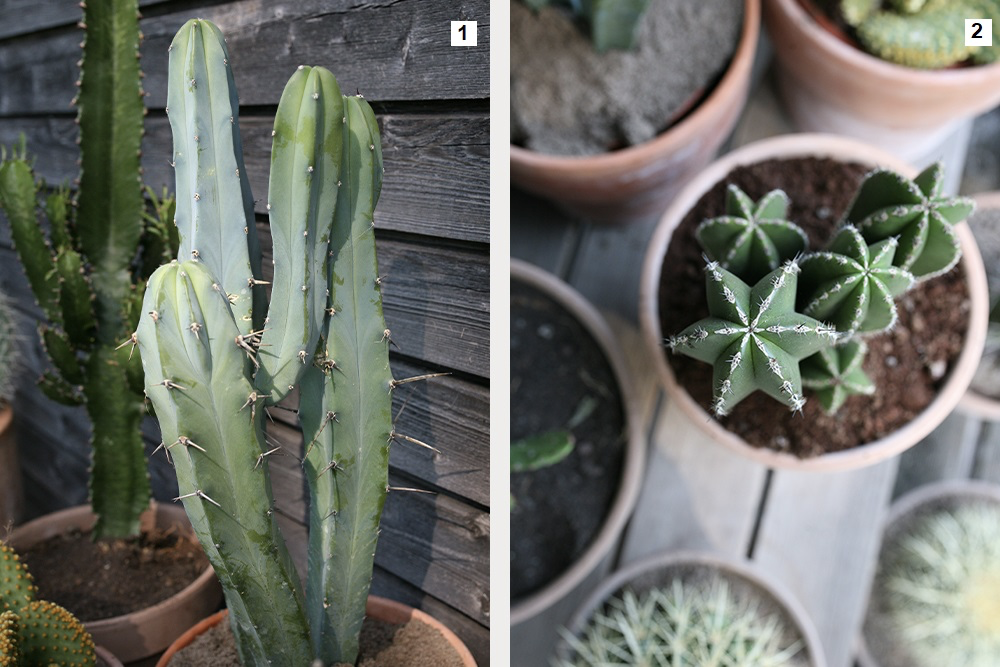
1. & 2. Trichocereus
